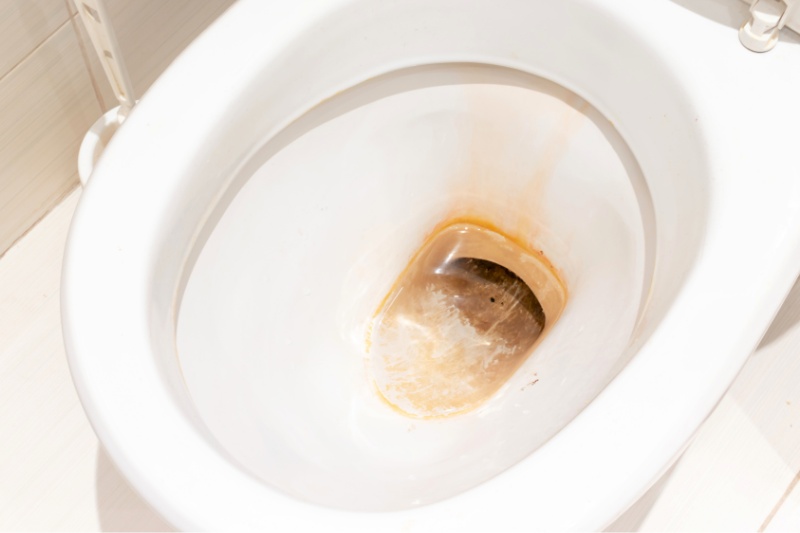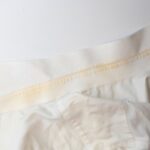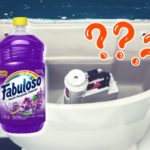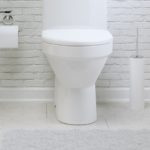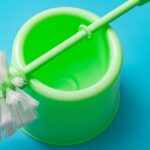Just discovered a gigantic ring around the toilet bowl, and to cap it off, the in-laws have just called and told you they’re popping in for an impromptu visit.
What are you going to do? They’re bound to notice the eyesore and think that the toilet hasn’t been cleaned in weeks – months, even!
At this point, you have two options:
- Carry on worrying and hope nobody needs to use the loo. Or…
- Read the quick guide below and remove your toilet bowl ring before your in-laws arrive, so they’ll be none the wiser! Let’s eradicate that toilet ring!
What Causes Toilet Rings?
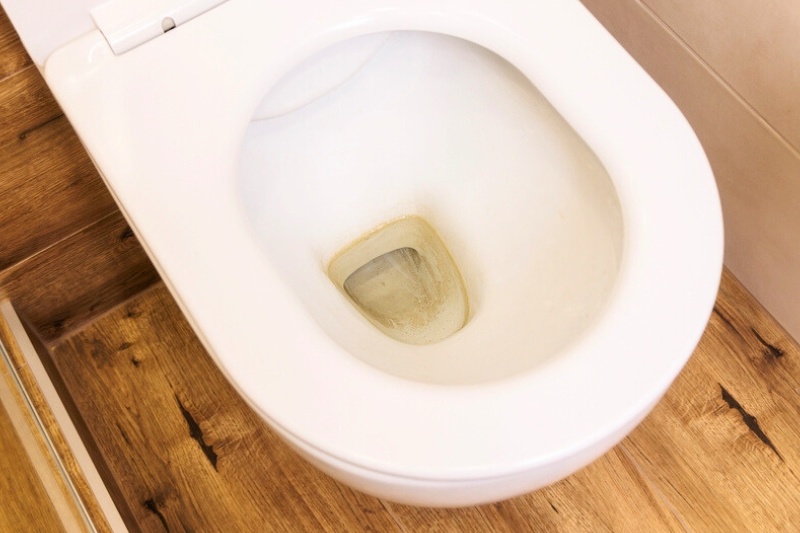
If you’ve just discovered a dreaded toilet ring in the loo, you may be wondering if it’s a line of poop!
Lucky for you, the ring you see in the toilet bowl isn’t a ring of faeces. It’s actually an accumulation of limescale, bacteria, and mould formed along the water line in your toilet bowl. Phew!
It’s relatively straightforward to remove, won’t cost too much to get rid of, and you can use household items to clean the toilet ring away – great news. It’s just what you need to hear before the in-laws arrive!
Let’s look at this in more detail.
Hard water
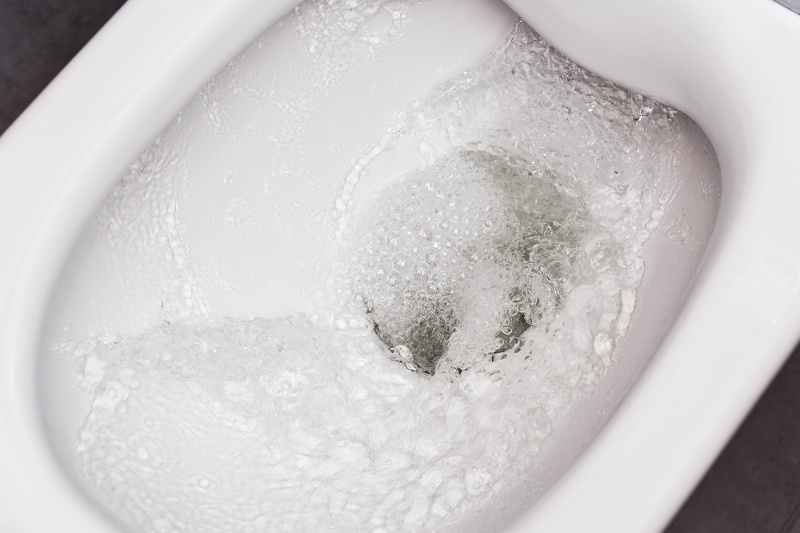
A toilet ring is generally a build-up of hard water deposits (its by-product is most commonly known as limescale), containing minerals like iron, manganese, and calcium.
The deposits plague the toilet bowl because the water sits idle and undisturbed in the area for long periods.
During this time, the deposits start solidifying, and eventually, you end up with a brown (sometimes pink/orange/dark-coloured) ring in the loo. (You see these stains a lot in vacant houses).
Bacteria/germs
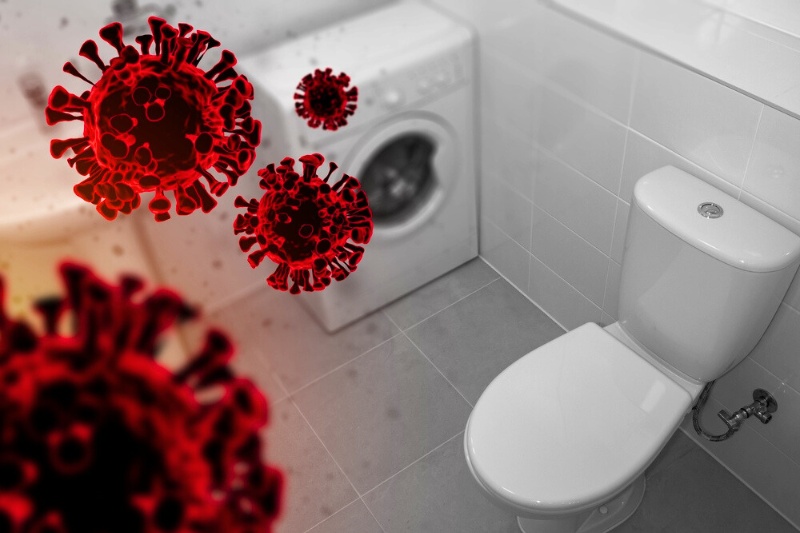
In addition to limescale, toilet bowls are filled with bacteria, a whopping 3.2 million bacteria per square inch on average, if you want to be specific.
So, as you’d expect, the toilet ring you see is teaming with germs, too! In this moist and quiet environment, microbes multiply incredibly quickly!
Your toilet ring may have a pinky/red hue or look a little slimy if it’s riddled with bacteria.
Mould

The toilet bowl provides a safe space for fungi to thrive in. It’s full of standing water, it’s moist, and there’s all kinds of dirt in the pan.
If you have a mould-related toilet ring, it will be green/dark in colour.
Although a toilet ring is an eyesore and can sometimes take time to remove (especially if the marks are big and old), it can usually be taken out with a little elbow grease.
With a little work, your toilet bowl will go back to looking clean and unblemished.
To get your pristine loo back, follow the guide below to eradicate the horrible ring!
On a side note: If you have brown stains in your toilet bowl, this could be a sign of rust in your water, and/or your pipes may be corroded. (This is a separate problem that would need to be addressed sooner rather than later by a qualified plumber).
How to Get Rid of a Toilet Ring
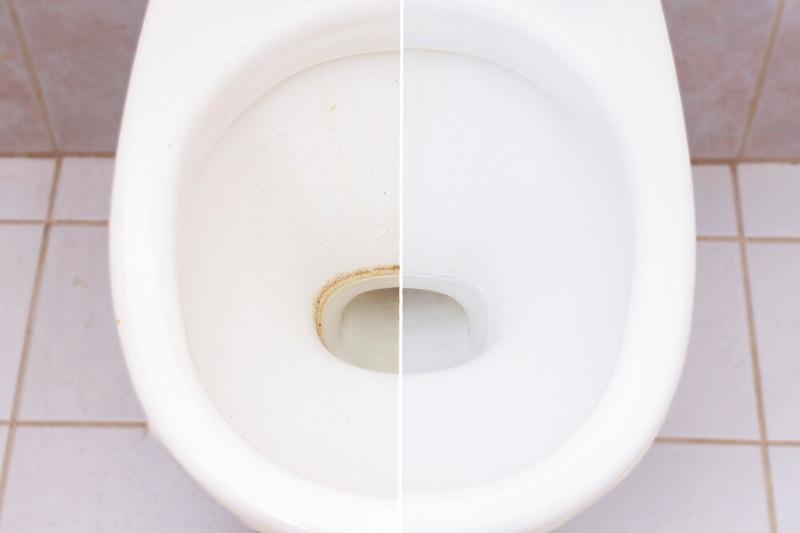
Below, you’ll find different methods to manage your toilet ring problem.
Depending on how bad your toilet ring is, you may have to repeat some of the methods below more than once to see significant results.
Or you may have to swap between methods to remove the troubling toilet ring!
Remember: Never mix cleaning chemicals.
Tips
Just a few things to consider before removing the toilet ring:
- Always wear gloves when cleaning a toilet.
- Open the bathroom window so lots of fresh air can enter the room.
- Keep kids and pets out of the room when dealing with the toilet ring.
- Take your time. If you rush, you may damage your toilet.
- Do a patch test first if you’re not sure if you can stick a particular product down the loo. And if you’re in doubt, don’t do it!
Method 1: White vinegar (mould/limescale-related toilet ring)
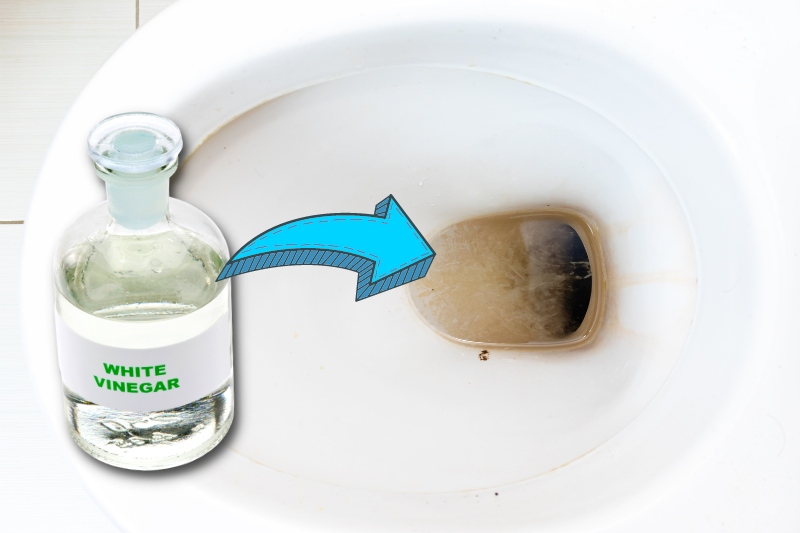
The acidic nature of vinegar is great at dissolving mineral deposits and mould! White vinegar is also readily available to buy and won’t cost a fortune.
Steps to follow:
- Flush the toilet.
- Fill the toilet bowl with equal parts of warm water and white vinegar. Don’t overfill the bowl.
- Grab a toilet brush and rub the solution all over the sides of the toilet bowl and up to the rim (internally only).
- Leave the white vinegar to do its job for 30 minutes.
- By the end of the 30 minutes, the ring should be looser.
- Grab the toilet brush.
- Dip it into the toilet bowl’s water and scrub the sides of the bowl again.
- Flush the toilet when the toilet ring has disappeared.
- Repeat the steps above if necessary.
Method 2: Pumice stone
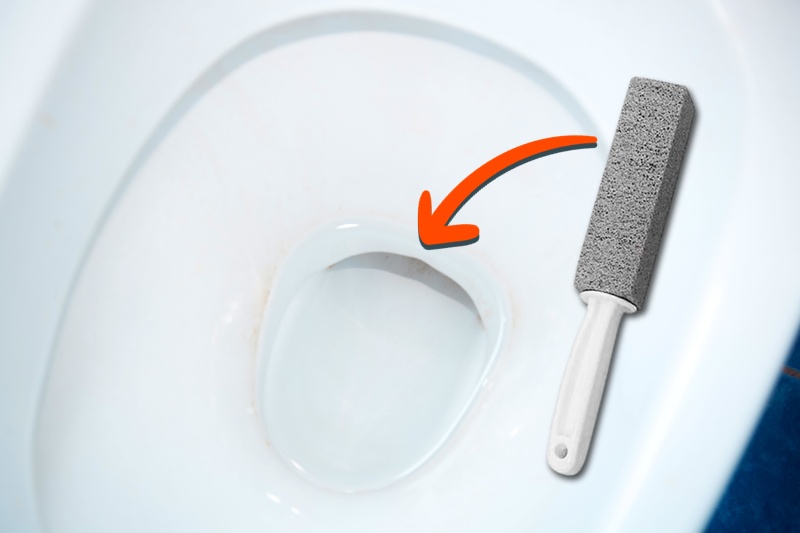
It’s also possible to use the method above, but when it comes to rubbing the sides of the toilet bowl down (to eradicate the toilet ring), you can use a pumice stone instead.
The abrasive nature of the pumice stone is ideal for cleaning the bowl as it won’t cause too much damage (provided that you work carefully). It’s also a chemical-free option!
To use a pumice stone to remove toilet ring stains from a bowl, you must make sure that the stone and bowl are wet (and remain wet throughout the process).
Then, you can gently rub the pumice stone along the surface to remove the dreadful toilet ring.
And don’t worry, you don’t have to stick your hand down the toilet to try this method out. You can actually buy special pumice stones that can be used in the toilet and come with a long handle!
Some suitable pumice stones you could consider are HengLiSam Pumice Stone Sticks and Kalolary Pumice Stones for Toilet Bowls. Both pumice stone packs come with two stones per pack, and each stone can be shaped to suit your toilet bowl (enables better coverage/easier to use).
See our post on how to use a pumice stone to clean a toilet for more tips.
Note: Always do a patch test before you use this method.
Method 3: Lemon or bicarbonate of soda scrub
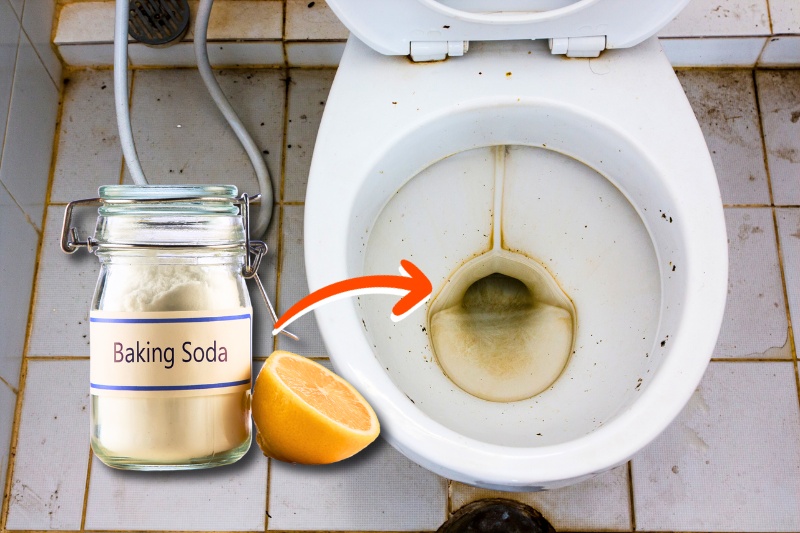
A cost-effective way to remove a relatively new toilet ring is to either scrub a bicarbonate of soda paste into the ring or rub the circle with half a lemon.
To create a bicarb paste, mix bicarbonate of soda with water until you get a thickish paste (must not be runny).
Then, you just need to coat the toilet ring with the paste, leave it in place for 15 minutes, and scrub it with a clean toilet brush. When you’re done scrubbing the toilet ring, you can flush the toilet.
To use a lemon to remove a toilet ring, cut a lemon in half, flush your toilet, then rub the lemon half along the toilet ring stain (ensure you’ve coated the entire toilet ring).
Once you’ve done this, you need to wait a few minutes, then grab your toilet brush and scrub the surface.
Method 4: Bicarbonate of soda and white vinegar (mouldy toilet ring)
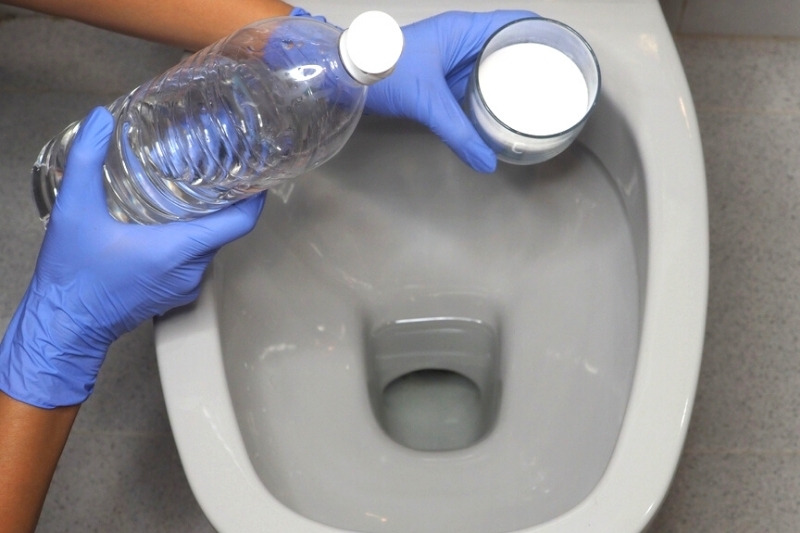
Bicarbonate of soda and white vinegar are safe household ingredients that you can use to treat your toilet ring.
Steps to follow:
- Flush the loo so it’s clear.
- Pour a cup of white vinegar into the toilet bowl.
- Use a toilet brush to coat the sides of the bowl with the vinegar.
- Wait about five minutes.
- Pour a cup of bicarbonate of soda into the bowl.
- Pour another cup of white vinegar into the bowl.
- Wait for the fizz to start.
- Close the toilet’s lid.
- Wait about 10 minutes.
- Use a toilet brush to scrub away the toilet ring.
- Flush the toilet when the ring is gone.
- Repeat if necessary.
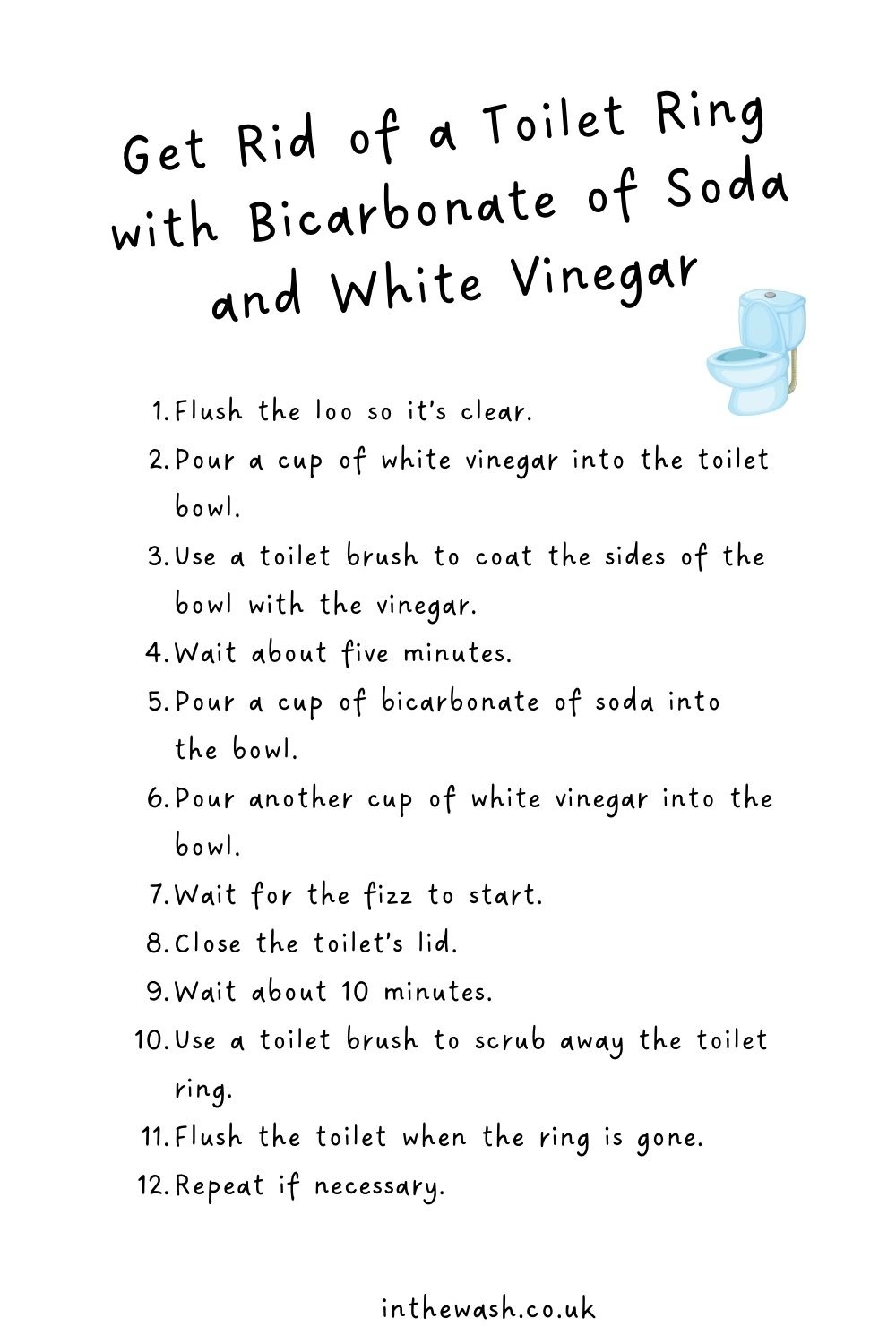
Method 5: Hydrogen peroxide (bacteria-related toilet ring)

Hydrogen peroxide is a tough chemical product that can clear toilet rings and germs from the pan. Just make sure you keep the bathroom window open when you try this method out.
Steps to follow:
- Grab some 3% hydrogen peroxide.
- Flush the toilet to empty it.
- Pour half a cup of hydrogen peroxide into the toilet bowl.
- Pour half a cup of bicarbonate of soda into the toilet bowl.
- Wait 30 minutes.
- Grab the toilet brush, dip it into the bowl (to coat it in product), and scrub the sides of the toilet.
- Continuously scrub the bowl until the ring is gone.
- Flush the toilet.
- Repeat the steps above if necessary.
Method 6: Specialised products
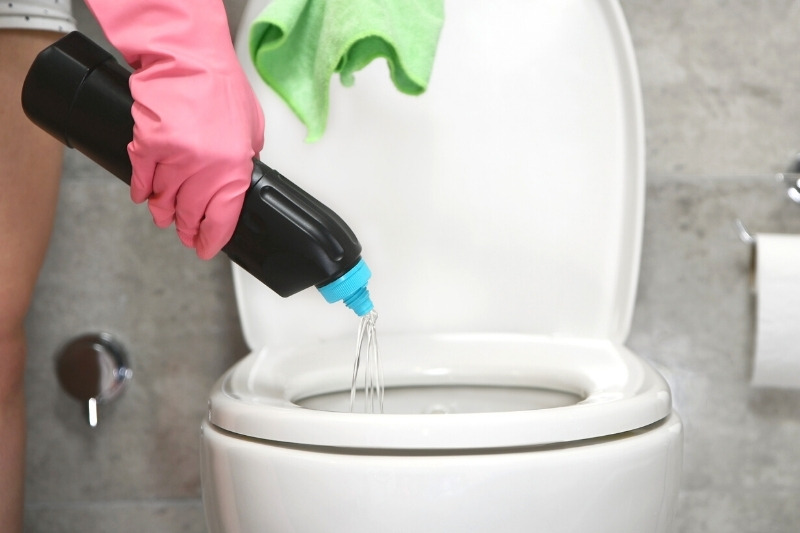
There are several specialised toilet cleaners you can pick up that can remove bacteria, mould, and limescale from toilet bowls.
The most popular toilet cleaners are made by Domestos, Harpic, and HG. See our guide to the strongest toilet cleaner products for some recommendations.
Just keep in mind that specialised cleaners get mixed results. So, you may have to repeat some treatments more than once or switch products to see significant results.
When using these cleaners, you should read the instructions on the bottle’s packaging and adhere to what it says.
(As mentioned above, you don’t use two toilet cleaners at the same time – you rinse the bowl and leave a gap between cleaners! You shouldn’t mix cleaning chemicals because you’ll trigger a chemical reaction).
Tip: Don’t forget to pick a toilet cleaning product with a scent you like!
How to Prevent Toilet Rings
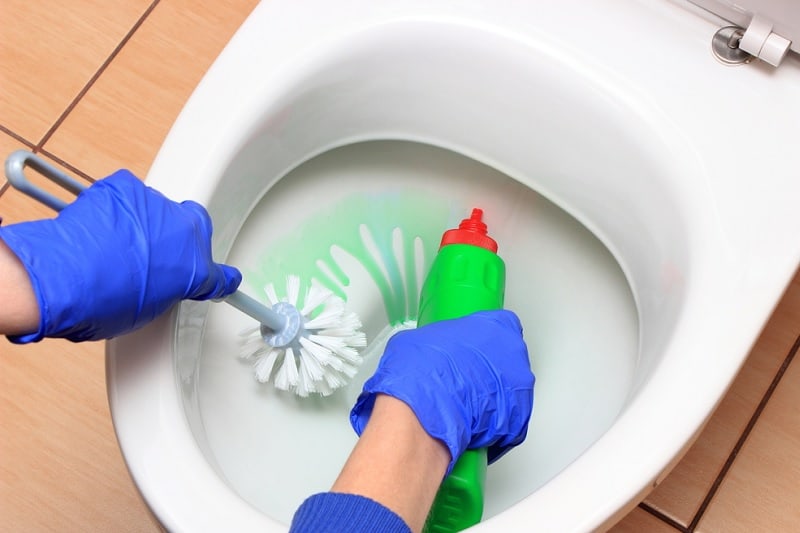
Here are a few preventative measures you could put into practice to prevent a toilet ring episode:
- Keep your toilet clean and don’t allow grime and hard water to build up in it.
- Squirt some toilet cleaner into the toilet bowl daily to prevent a huge buildup of bacteria. For example, you can apply a little cleaner every time you use the toilet throughout the day to keep it refreshed and germ-free. The cleaner will remain in the toilet bowl between uses, so it continuously keeps your toilet bowl clean.
- Flush your toilet often. If you flush your loo regularly throughout the day, you can stop standing water from causing chaos in the pan!
- Flush the toilet after every use. Encourage all family members to flush the toilet when they’re done using it. Even if they’ve only done a Number 1! This will prevent bacteria from putting in too much of an appearance. If you’ve had a major Number 2 episode, clean the mess up, or it’ll become a haven for germs.
- Use water softeners to soften up the hard water that enters your toilet. This will reduce the number of mineral deposits in your toilet bowl and can prevent rings.
- Don’t forget to clean the cistern. An annual clean (at least) will stop mineral deposits and grime from building up in the area.
- Make the most out of your toilet cleaning products and tools. And use them when cleaning your toilet – grab your toilet brush and get brushing! Make sure you have a good toilet brush on hand.
Does WD-40 Remove Toilet Rings?

WD-40 can be used to remove toilet rings from a toilet bowl. Follow the steps below:
- Flush the loo.
- Squirt some WD-40 all over the toilet ring.
- Wait a few minutes – the solution will start to break down/soften the ring.
- Scrub the toilet ring with a clean toilet brush.
- Continue to rub the bowl until it is clean.
- Flush the toilet.
- Repeat the steps above if necessary.
Will Bleach Get Rid of a Toilet Ring?
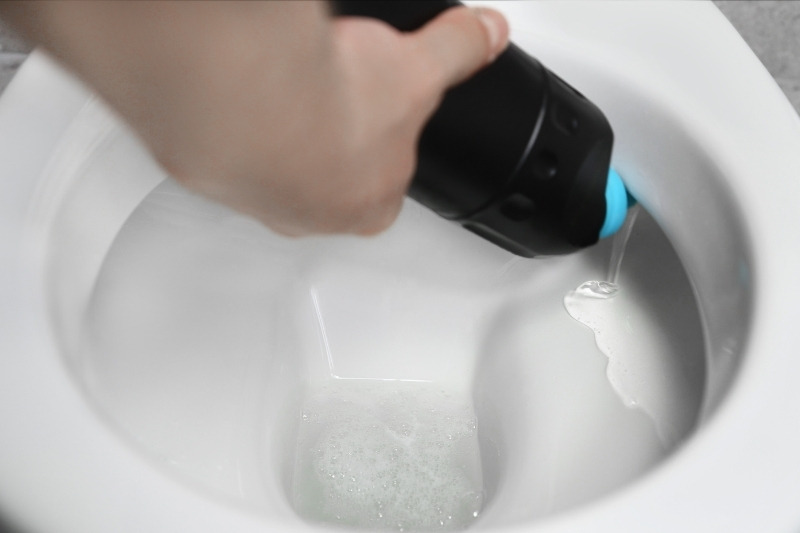
It is possible to use bleach to remove some toilet rings.
Interestingly, most toilet cleaners actually contain a form of bleach. So, whether you realise it or not, every time you squirt a cleaner down the pan, you’re putting bleach down the toilet.
In most cases, bleach can disinfect the toilet bowl and remove mould and mineral deposits for you.
However, you should always use bleach with caution. It is, after all, a strong chemical that may damage the toilet bowl/pipework (plumbing) if they’re constantly exposed to it.
This is even more true if you use raw chlorine bleach – a powerful, undiluted form of bleach.
Here’s a quick guide on how to use bleach to remove toilet rings:
- Flush the toilet.
- Pop some gloves on and open the window.
- Pour a quarter of a cup of bleach down the toilet.
- Grab the toilet brush and dip it into the water and bleach mixture.
- Use the toilet brush to coat the ring in diluted bleach.
- Leave the bleach in the toilet for about 15 minutes. It can be longer if the stain is stubborn.
- Scrub the toilet ring with the brush again.
- Flush the toilet.

Bethan has a passion for exploring, reading, cooking and gardening! When she’s not creating culinary delights for her family, she’s concocting potions to keep her house clean!
